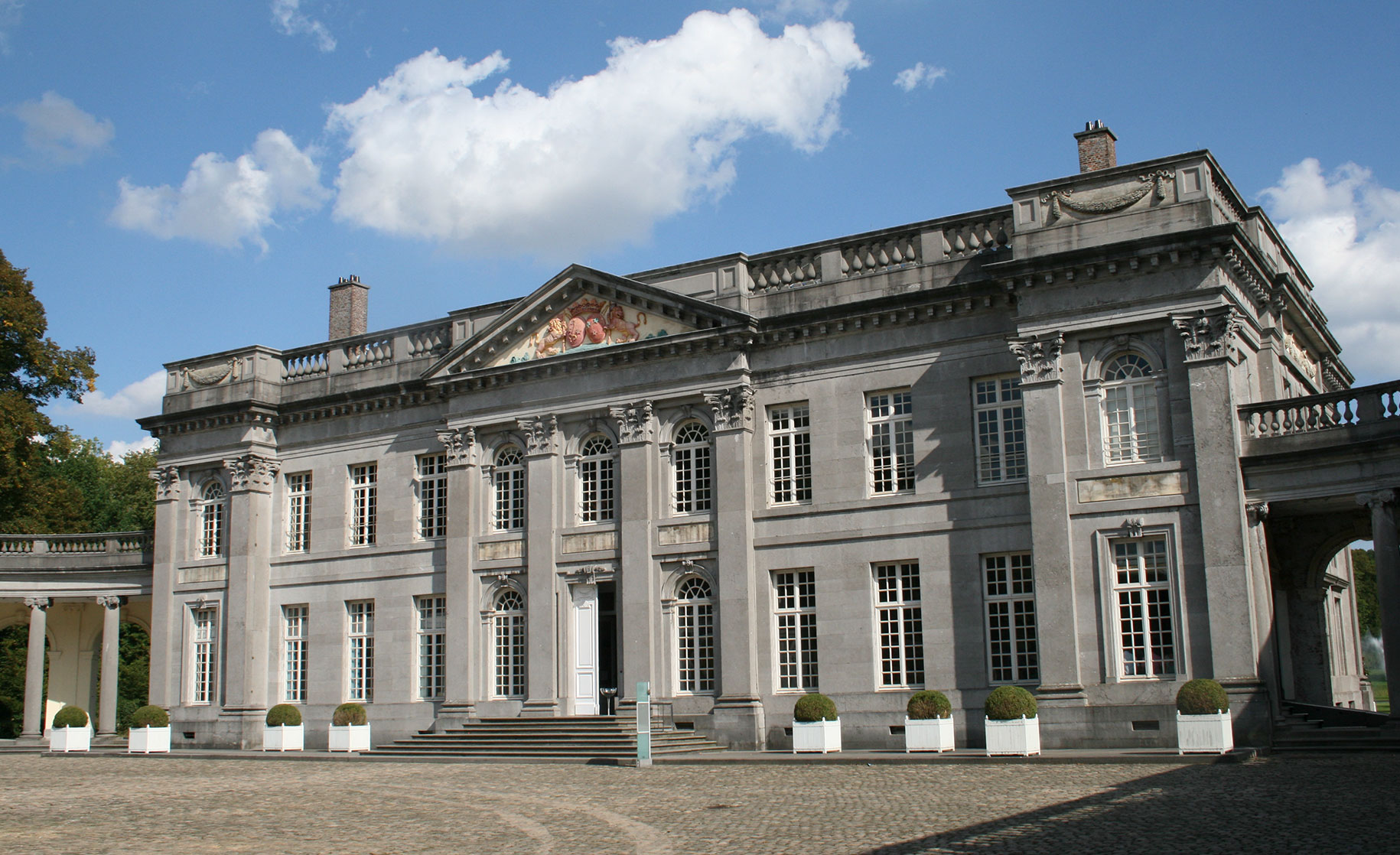
Seneffe, castel build by the architect Laurent-Benoît Dewez during 2d part of 18th c., in ‘Petit Granit’, often in large éléments and in high monolithic columns, with a very good conservation (photo F. Tourneur)
Year designation
Lithology
Aesthetics
Geological settings
Paleozoic – Carboniferous – Middle to late Tournaisian
Location
Wallonia, province of Hainaut and in the Condroz region
Seneffe, castel build by the architect Laurent-Benoît Dewez during 2d part of 18th c., in ‘Petit Granit’, often in large éléments and in high monolithic columns, with a very good conservation (photo F. Tourneur)
A classic stone in fine arts
The stone can be used in nearly every kind of applications in architecture, garden architecture, decoration and sculpture. It has been used in many monuments throughout Belgium since the Middle Age until present. Largely exported since at least 18th century, first in surrounding countries (France, western part of Germany, but mostly in Holland) then through the world (for examples in the cathedral of Funchal, Madeira, and in the original fittings of the Suez Canal). In Paris, floors of Notre-Dame cathedral and Panthéon used the material mixed with French limestones. Appreciated since a long time by many artists for sculpture, small to very large, and also very frequently used in funeral heritage in Belgium and neighbouring regions. An ancient quarry in Soignies is protected as heritage site with the old industrial buildings, now used for education and professional training. 15 quarries are still active at present.
- Author(s)
Francis Tourneur


